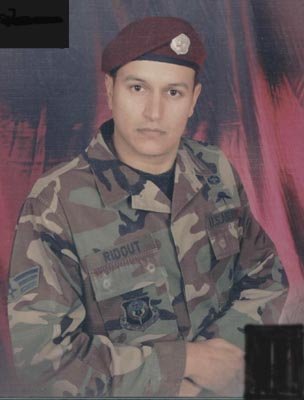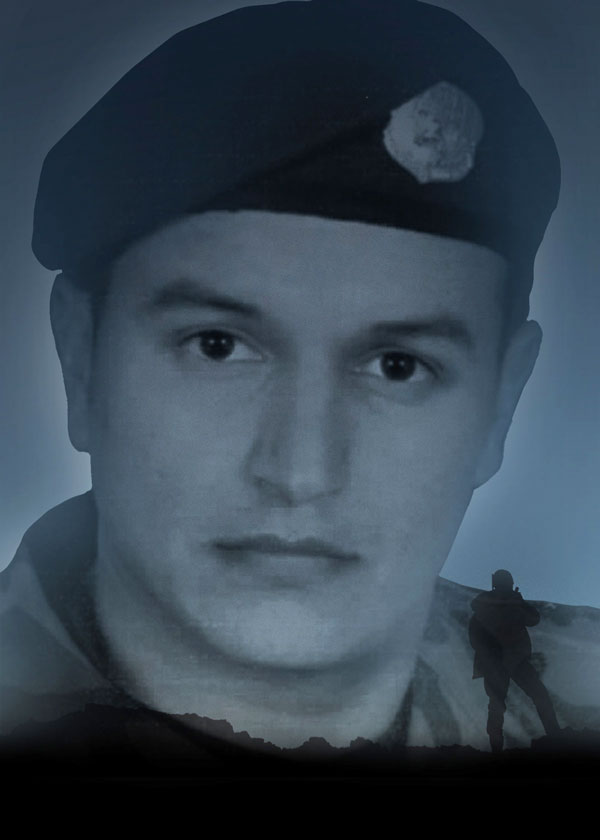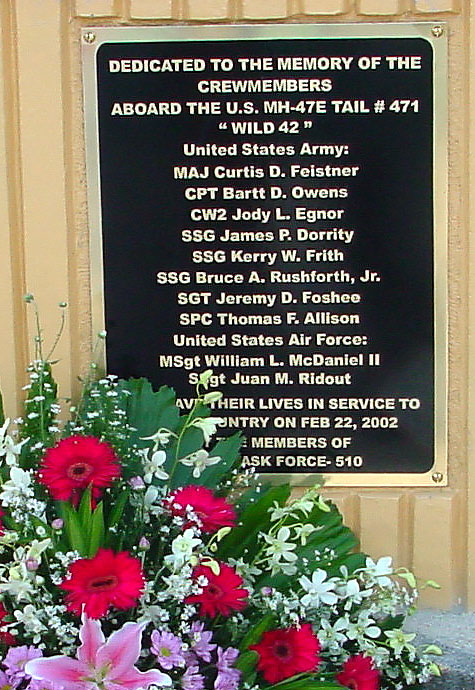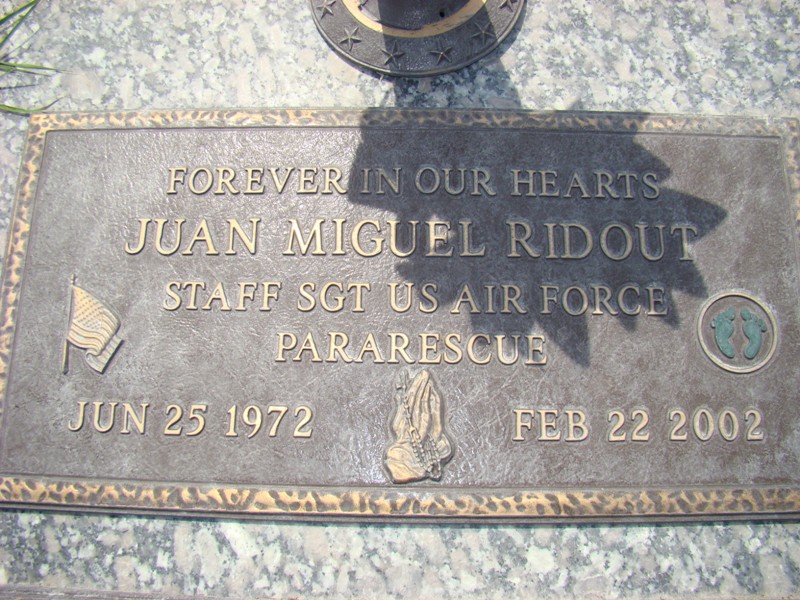Hosted by USAF PJ Association
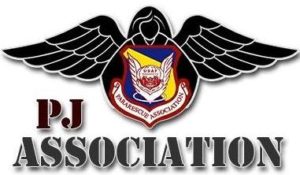 |
“It is my duty, as a member of the Air
Rescue Service, |
Pararescueman Killed in Action
Juan M. RidoutStaff Sergeant |
|
|
|||||
|
On February 22, 2002, a U.S. Army 160th Special Operations Aviation Regiment MH-47E Chinook crashed while ferrying United States Special Forces and supplies in the Philippines, from Zamboanga City to Basilan Island. The crash killed ten American servicemen including Staff Sergeant Juan Ridout and MSgt William McDaniels. They were Pararescuemen assigned to the 320th Special Tactics Squadron (320th STS) Kadena AB, Japan. The helicopter and crew were deployed to the Philippine. They were supporting United States actions to assist the armed forces of the Philippines in the Global War on Terrorism (GWOT). They were conducting counter-terrorism operations against Abu Sayef, a guerilla group with links to Al Qaeda.
In 1999, Sergeant Ridout participated in Operation Allied Force,
rescuing a downed F-16 pilot inside Kosovo. He was named Pararescueman
of the Year for his heroism. Juan Ridout was buried in
Memory Gardens Cemetery, Corpus Christi, Texas, near his mother, who
died at the age of 30 from cancer. Michael’s daughter and Juan’s sister,
Jessica, reside nearby. |
|||||
|
|
|||||
|
On the night of 21 February 2002, two MH-47Es, call signs Wild 41 and Wild 42, formed a two-ship flight and flew their programmed route to the objectives at 150 feet above the water. Two MC-130P Combat Shadow refueling aircraft from the 351st Special Operations Wing accompanied the Chinooks. The flight of the two MH-47Es, took off about 0100 hours and once offshore, climbed to meet the MC-130P Combat Shadow to aerial refuel. Because of turbulence, the refuel took a little longer than normal as Wild 42 had problems “hitting the hose.” With the refuel accomplished about 0155 hours, the two Chinooks descended into the light rain, leveled off at 150 feet, and headed directly for Mactan Air Base. The two MH-47s were returning to base when at 2:30 a.m. one of the MH-47s crashed into the sea. The crash investigation concluded that the crash was a result of pilot error. There were 10 persons on board the downed chopper. The second MH-47 immediately began rescue operations. The pilot of Wild 41 witnessed the crash from the left pilot seat. He called in the emergency on the radio and immediately started Search and Rescue. The PJs on Wild 41 got suited up for deployment into the water. There were several fires and large amounts of aircraft debris on the water. The PJs on Wild 41 were Staff Sergeant Tim Tweeter and Senior Airman Aaron Butler. In spite of floating and flaming debris, they volunteered to deploy to the downed chopper. They had hoped to get to the main fuselage prior to it completely submerging. Wild 41 hovered about eighty feet above the water, the crew searching the area for survivors, then sweeping the crash site with white lights before the first PJ (SSgt Tim Tweeter) was lowered to the surface on the jungle penetrator. He stayed down about fifteen minutes, getting dunked several times in burning JP-8 fuel, before being hauled back aboard. The second PJ, Senior Airman Aaron Butler quickly replaced him. In the midst of the small fires, the PJ spotted a life preserver just below the surface of the water and recovered the body of a Wild 42 crewmember; the PJ ultimately recovered three bodies at the crash site. Wild 4’s crew scoured the crash site for survivors or bodies until forced to break off the search to climb and refuel. No survivors were found in spite of the intense search. Wild 41 continued the search, even doing a third aerial refuel at five hundred feet in order to maintain observation of the crash scene. Shortly after daybreak, with a U.S. Navy P-3 Orion and an Air Force C-130P on station, Wild 41 left the crash site and headed for Mactan Air Base. By then, the Wild 41 aircrew had been flying over thirteen hours straight. Eventually, U.S. Navy and a contract company completed salvage operations and recovered the downed helicopter and the remaining bodies.
|
|||||
|
|
|
||||
|
|
|||||
